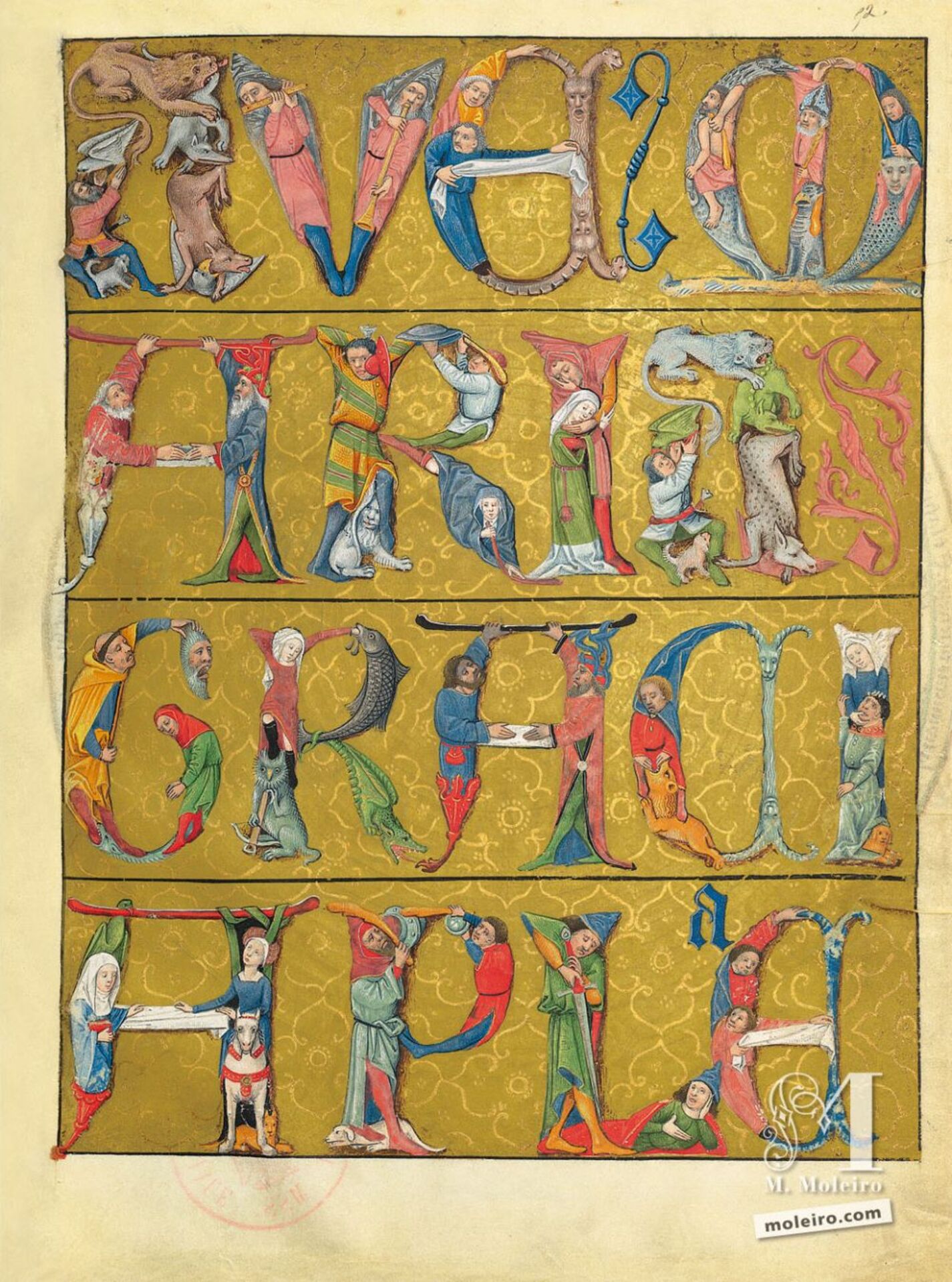The opening words of Ave Maria are spelt out in anthropomorphic initials covering an entire page upon a golden ground. The different figures and animals are shown interwoven or attacking each other or playing music. The result is very striking; the letters contrast so sharply with the golden ground that they seem to stand out from the folio. The way the letters are put together is a sort of visual or mental exercise in which fighting animals and whimsical elements do not seem to detract from the holy prayer to the mother of Christ.
Large initials were often used as a framework for imagery in medieval illuminations, particularly historiated initials. But the initials in this instance do not contain images: they are actually formed by different figures. The earliest examples of such initials are those in a manuscript copied at Cîteaux abbey in the early 12th century, Moralia in Job, which consist of a variety of figures including jugglers, and monks cutting wood or harvesting. In the late 1460s, Master E.S. created a complete alphabet in this style – far bolder and colourful than the distant models of the Romanesque era. He was inspired considerably by the Taccuino di disegni, the illuminated pattern book by Giovannino de’ Grassi dating from the late 14th century. The prints by Master E.S. were a standard that Robinet Testard must necessarily have seen, as revealed by the letter A at the beginning of Ave Maria which was an accurate copy of the same letter by Master E.S. However, Testard apparently had access to another woodblock alphabet dated 1464 from Flanders or the Netherlands which he used as a model. All the other letters are in fact copied directly from that alphabet, including the first letter A in the word Maria, which the first A in the word Gracia is an almost identical copy of. Two of these alphabet series are to be found in London (British Museum, B,10.1-23 [incomplete] and 1947,0724.1-19 [incomplete]).
There is also a woodblock copy in Basle, and the Master of the Banderoles, an engraver active in Flanders between 1450 and 1475, created a dry-point version too. It is difficult to be sure which version Robinet Testard had in front of him but a comparison of some letters in the 1464 alphabet with those in engraved copies by the Master of the Banderoles, suggests that the Parisian illuminations bear a greater resemblance to the copies by the Flemish engraver. This should come as no surprise because, as we have seen, Testard often used German and Netherlandish engravings as a source of inspiration for his motifs.
Séverine Lepape
Curator
Musée du Louvre
